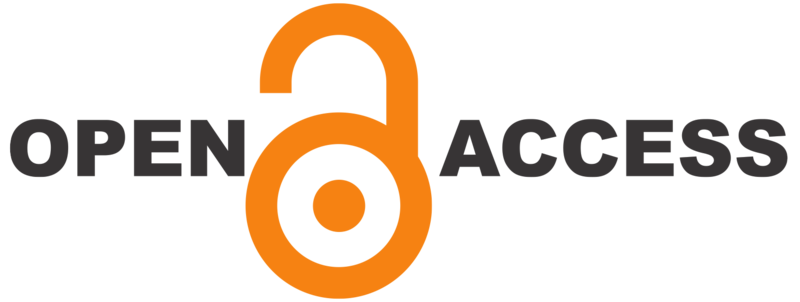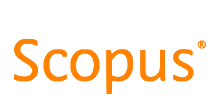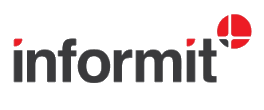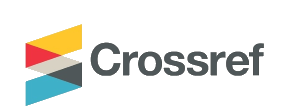Good WIL hunting: Building capacity for curriculum re-design
DOI:
https://doi.org/10.21153/jtlge2017vol8no1art670Keywords:
Work Integrated Learning (WIL), leadership, curriculum, employability, capacity building, authentic assessmentsAbstract
In response to government, industry, student and central University calls for initiatives to enhance graduate employability as a means for improved employment outcomes, a faculty within an Australian university formulated a five-year Work Integrated Learning (WIL) strategy (2015-2019). The Faculty goal was to re-new, develop, implement and evaluate scalable and sustainable intentional WIL-focused authentic curricula across every undergraduate Science, Technology, Engineering and Mathematics (STEM) course by the end of 2019. A ‘WIL Leadership Framework’ underpinned the whole-of-course team approach. This paper reports on the change-management processes and behaviours necessary to effect change from the bottom-up. Fostering academic staff capacity to build course-appropriate WIL curriculum has been slow and subtle and yet significant refinements to intentional and embedded WIL curriculum have occurred through a series of grounded research studies and curriculum renewal projects. WIL champions (the innovators), earmarked as change agents for enabling scalable curriculum transformation and renewal, were ‘hunted-out’ and nurtured. Their role was to influence teachers to enact context-specific and discipline-based WIL experiences into the curriculum. The main research findings to date reveal that STEM-specific WIL frameworks, concepts and assessment examples, presented as scholarly curriculum choices by WIL experts, and then actively and collegially discussed amongst the WIL champions and WIL early adopters, has been the most effective process to date for developing a WIL centred curriculum. The paper concludes by addressing the current operational goals predicated to have an impact on graduate employment for the Faculty.
Metrics
References
Abeysekera, I. (2006). Issues relating to designing a Work-Integrated Learning (WIL) program in an undergraduate accounting degree program and its implications for the curriculum. Asia-Pacific Journal of Cooperative Education, 7(1), 7–15. https://ssrn.com/abstract=2326048
Billet, S. (2001). Learning in the workplace: Strategies for effective practice. Crows Nest, NSW, Australia: Allen and Unwin.
Bosco, A. M., & Ferns, S. (2014). Embedding of authentic assessment in work-integrated learning curriculum. Asia-Pacific Journal of Cooperative Education, 15(4), 281–290.
Campbell, M. (2016). Learning to work, working to learn: Curriculum design and teaching practice for WIL in the Natural and Physical Sciences. In E. Johnson (Ed.), WIL in Science: Leadership for WIL Final Report (pp. 40–43). Sydney: Australian Council of Deans of Science.
Campbell, M. (2017). SEBE WIL Strategy. Victoria: Deakin University.
Crebert, G., Bates, M., Bell, B., Patrick, C. J., & Cragnolini, V. (2004). Ivory tower to concrete jungle revisited. Journal of Education and Work, 17(1), 47–70. https://doi.org/10.1080/1363908042000174192
Deakin University. (2017). What is work integrated learning? Retrieved from https://blogs.deakin.edu.au/wil/
Department of Education and Training. Core Skills for Work Development Framework (2016). Retrieved from https://www.education.gov.au/core-skills-work-developmental-framework
Edwards, D., Perkins, K., Pearce, J., & Hong, J. (2015). Work integrated learning in STEM in Australian universities: Final Report. Canberra: Office of Chief Scientist & Australian Council for Educational Research
Eraut, M., & Hirsh, W. (2007). The significance of workplace learning for individuals, groups and organisations. Oxford and Cardiff Universities: UK.
Gulikers, J., Bastiaens, T., & Kirschner, P. (2004). Educational Technology Research and Development (ETR&D), 52(3): 67–86. https://doi.org/10.1007/BF02504676
Hains-Wesson, R., & Young, K. (2017). A collaborative autoethnography study to inform the teaching of reflective practice in STEM. Higher Education Research & Development, 36(2), 297–310. http://dx.doi.org/10.1080/07294360.2016.1196653
Hart, G., & Stone, T. (2002). Conversations with students: The outcomes of focus groups with QUT students. Paper presented at the Quality Conversations - Higher Education Research and Development Society of Australasia Conference, Perth.
Henderson, C., Beach, A., & Finkelstein, N. (2011). Facilitating change in undergraduate STEM instructional practices: An analytic review of the literature. Journal of Research in Science Teaching, 48(8), 952–984. https://doi.org/10.1002/tea.20439
Johnson, E. (2016). ACDS WIL in Science: Leadership for WIL Final Report. Sydney: Australian Council of Deans of Science. Retrieved from http://www.chiefscientist.gov.au/wp-content/uploads/WIL-in-Science-project-report-2016-final-publication-post-review.pdf
Kaider, F., Hains-Wesson, R., & Young, K. (2017). Practical typology of authentic work-integrated learning activities and assessments. Asia-Pacific Journal of Cooperative Education, Special Issue, (18)2, 153–165.
Leathwood, C., & Phillips, D. (2000). Developing curriculum evaluation research in higher education: Process, politics and practicalities. Higher Education, 40(3), 313–330. https://doi.org/10.1023/A:1004183527173
McIlveen, P., Brooks, S., Lichtenberg, A., Smith, M., Torjul, P., & Tyler, J. (2008). Career development learning & work-integrated learning in Australian higher education: A discussion paper. Paper presented at the National Symposium on Career Development Learning: Maximising the Contribution of Work-integrated Learning (WIL) to the Student Experience, Melbourne. https://doi.org/10.1007/978-90-481-3937-8_9
National Research Council. (2003). Improving undergraduate instruction in science, technology, engineering, and mathematics: Report of a workshop. Washington, D.C.: National Academies Press. https://doi.org/10.17226/10711
Norton, A., & Cakitaki, B. (2016). Mapping Australian higher education 2016. Melbourne: Grattan Institute.
Oliver, B. (2015). Redefining graduate employability and work-integrated learning: Proposals for effective higher education in disrupted economies. Journal of Teaching and Learning for Graduate Employability, 6(1), 56–65. http://dx.doi.org/10.21153/jtlge2015vol6no1art573
Orrell, J. (2011). Good practice report: Work-integrated learning. NSW: Australian Learning & Teaching Council.
Palmer, S., Tolson, M., Young, K., & Campbell, M. (2015). The relationship between engineering bachelor qualifications and occupational status in Australia. Australasian Journal of Engineering Education, 20(2), 103–112. https://doi.org/10.1080/22054952.2015.1092666
Patrick, C.J., Fallon, W., Campbell, M., Devenish, I., Kay, J., Lawson, J., Russell, L., Tayebjee, F. & Cretchley, P., (2014). Leading WIL: A distributed leadership approach to enhance work integrated learning: Final Report 2014. NSW: Department of Education, Office for Learning and Teaching.
Patrick, C.J., Peach, D., Pocknee, C., Webb, F., Fletcher, M., & Pretto, G. (2008). The WIL (Work Integrated Learning) report: A national scoping study. Queensland University of Technology.
Poppins, P., & Singh, M. (2005). Work integrated learning in information technology education. In T. Weert & A. Tatnell (Eds), Information and communication technologies and real life learning: New education for the knowledge society, (pp.223–230). Boston: Springer. https://doi.org/10.1007/0-387-25997-X_25
Reeders, E. (2000). Scholarly practice in work-based learning: Fitting the glass slipper. Higher Education Research & Development, 19(2), 205–220. http://dx.doi.org/10.1080/072943600445655
Rowe, A., Winchester-Seeto, T., & Mackaway, J. (2012). That’s not really WIL!–building a typology of WIL and related activities. Paper presented at the 2012 Australian Collaborative Education Network National Conference.
Sin, C., & Amaral, A. (2017). Academics’ and employers’ perceptions about responsibilities for employability and their initiatives towards its development. Higher Education, 73(1), 97–111. https://doi.org/10.1007/s10734-016-0007-y
Smith, C. D. (2016). The emergence and development of Work-Integrated Learning (WIL): Implications for assessment, quality and quality assurance in higher education. In C. Ng, B. Fox & M. Nakano (Eds.), Reforming learning and teaching in Asia-Pacific universities, (pp. 337–364). The Netherlands: Springer. https://doi.org/10.1007/978-981-10-0431-5_16
Smith, C., Ferns, S., Russell, L., & Cretchley, P. (2014). The impact of work integrated learning on student work-readiness. NSW: Department of Education, Office for Learning and Teaching.
Tolson, M., & Young, K. (2016). SEBE Model of WIL. In M. Whelan & L. Johnson, Roundtable: WIL in Science. Paper presented at the WIL 2020: Pushing the boundaries – Proceedings of the 2016 ACEN National Conference, Springvale South, Australia.
Universities Australia, Australian Chamber of Commerce Industry, Australian Industry Group, Business Council of Australia, & Australian Collaborative Education Network. (2015). National strategy on work integrated learning in university education.
Willems, J., Young, K., Cardilini, A., & Teychenne, S. (2016). WIL-fully flipping online: A novel pedagogical approach in STEM. Paper presented at the 33rd International Conference of Innovation, Practice and Research in the Use of Educational Technologies in Tertiary Education, Adelaide, Australia.
Yorke, M. (2006). Employability in higher education: What it is-what it is not (Vol. 1). Higher Education Academy, York.
Young, K. (2016). WIL Convergence Curriculum Framework. SEBE. Deakin University. Victoria, Australia.
Young, K., Cardilini, A., Willems, & Teychenne, S. (2016). STP010/710 – fully flipped. Paper presented at the Deakin Learning Futures, Deakin University, Melbourne, Australia.
Young, K., Palmer, S., Tolson, M., & Campbell, M. (2016). Distributed leadership model: Enabling faculty-wide enhancement of scaffolded WIL. Paper presented at the WIL 2020: Pushing the boundaries – Proceedings of the 2016 ACEN National Conference, Springvale South, Australia.











